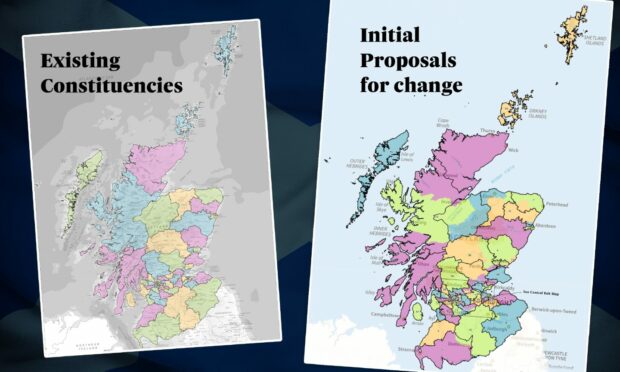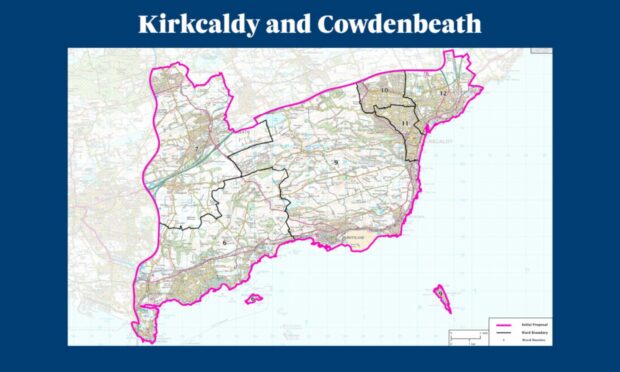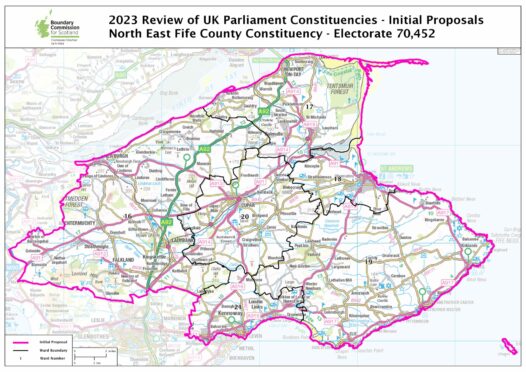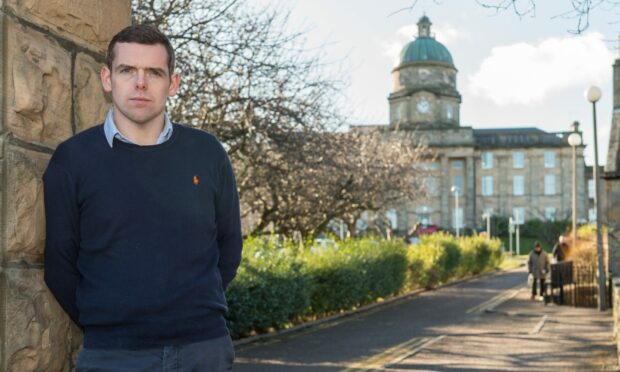A radical shake-up of the UK’s constituency boundaries which will see Scotland lose MPs and drastically change how voters in Courier Country are grouped together has been described as a “dog’s dinner”.
Scotland would lose two Westminster seats under the 2023 Review of UK Parliament constituencies, reducing the number of representatives from 59 to 57.
The SNP have called the plans “a dogs breakfast”, claiming it will “weaken” Scotland’s voice in Westminster and Scottish Conservative leader Douglas Ross has bucked against the UK Government, condemning plans to split up his Moray constituency.
Under the scheme, England would gain an additional 10 MPs, at 543. No change would be seen to the number of members Northern Ireland has, while Wales would lose eight.
A public consultation will take place over the next eight weeks, with people invited to share their views on the redesign and renaming of some of Scotland’s Westminster seats.
The proposals, which looked to resolve parity issues in the number of voters in constituencies, will have to be approved by Parliament.
But the commission hopes any changes would be in place by 2024 – when the next general election is expected.
The parameters of the review have said the number of voters in each constituency must fall between about 70,000 and 77,000, unless the area would cover more than 12,000 square kilometres.
What will change where I live
Angus
In what will likely be the largest shift, the current Angus constituency will take on residents from four current constituencies, as well as lose some from major population centres.
The newly created Angus and Strathmore would see residents in Montrose share an MP with those in Scone, Spittal of Glenshee, Blairgowrie and Coupar Angus in the west.
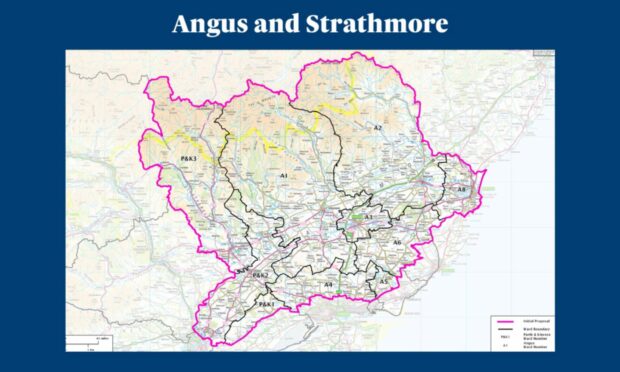
Arbroath, as far north as Lunan Bay and Braehead, will now be part of Dundee East and Arbroath.
Dundee
Dundee West and East will see their northern borders reduced, with Fowlis, Kellas, Bridgefoot and Monikie all becoming part of Angus and Strathmore.
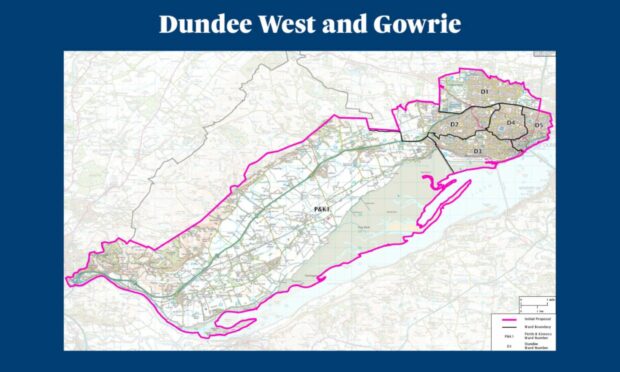
Dundee West and Gowrie will take on some residents living in the current East constituency, with the border between the two now going roughly from Trottick in the north to Port of Dundee in the south.
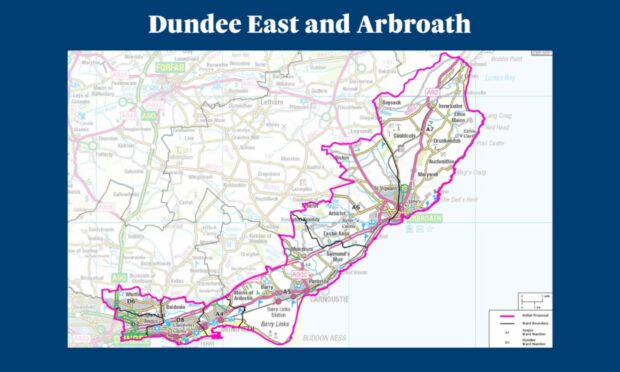
Carse of Gowrie, currently part of Perth and North Perthshire, would be split in two, with the southern part falling into Dundee West and Gowrie. Residents living west of the Friarton bridge, close to Walnut Grove, would also be part of that constituency.
Abernyte and Fingask would become part of Angus and Strathmore.
Perth
A newly drawn Perth and Tay County will take in Auchterarder from the old Ochil and South Perthshire constituency, which will be scrapped.
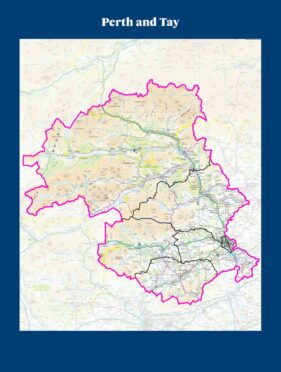
Abernethy in the south east will become part of it, while Blairgowrie, Coupar Angus, and Meikleour — as mentioned earlier — all become part of Angus and Strathmore.
Ochil and South Perthshire will be subsumed by Perth and Tay, Glenrothes and Loch Leven, West Fife and Mid Forth Valley constituencies.
Fife
The newly formed Glenrothes and Loch Leven constituency would take on Kinross and Milnathort to the north, while Kennoway would become part of North East Fife.
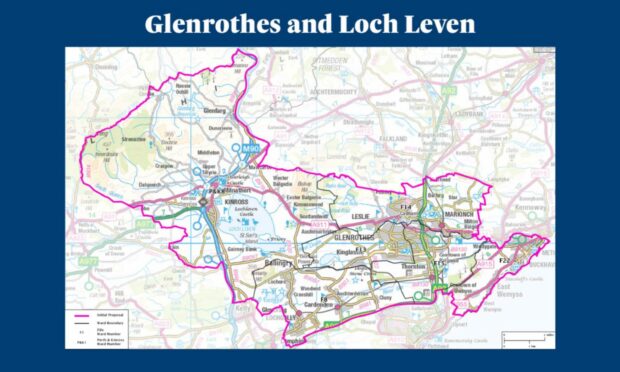
Lochgelly will become part of Glenrothes and Loch Leven, while Loch Gelly will remain in Kirkcaldy and Cowdenbeath.
Inverkeithing will become part of the Kirkcaldy and Cowdenbeath constituency.
Rosyth, Dunfermline, Kincardine on Forth and Crook of Devon will become the new West Fife constituency.
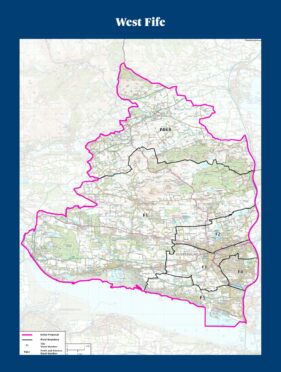
Opposition reaction
Perth and North Perthshire SNP MP Pete Wishart said: “The boundary proposals for
Perth and Kinross are a dogs breakfast with the counties constituencies overlapping into Angus, Fife and Dundee with Kinross-shire separated from the rest of Perth and Kinross and Scone now finding itself in the same constituency as Montrose.
“It’s as if these constituencies were designed by someone who knows absolutely nothing about the area. There’s going to have to be a bit of work to make them feel like the communities they should be.”
Lord Matthews, Deputy Chair of the Boundary Commission for Scotland, said: “I believe this is a promising start to delivering the requirements of the new rules that mean the number of constituencies in Scotland will reduce from 59 to 57 and that each mainland constituency must have broadly the same number of electors.
“We have set out proposals today which do that and are, we believe, a good implementation of the rules set by Parliament.
“Thursday is the beginning of a process and we now want to hear the views of the public. We will reflect on responses to the consultation and make changes where appropriate and where the legislation allows us to do so. We strongly encourage voters to make their views heard.
“We welcome all comments on our proposals on our consultation site at www.bcs2023review.com.
“We particularly want to hear suggestions on two aspects, suggestions for alternative boundaries that comply with the legislative requirements and constituency names.”
Scottish Tory leader to fight changes
Scottish Conservative leader Douglas Ross, who will stand down as MP for Moray at the next election having been elected an MSP, said he would oppose his government’s plans for boundary changes.
He said: “While I have already said that I will not be fighting the Moray seat at the next election, as the current MP I can’t support the proposals to carve-up the Moray constituency.
“It has been a huge honour to represent my home area as the local MP, but under these proposals, many historic local links would be lost and Moray’s identity diluted. The current seat works well as all the electors are within the Moray Council area and are represented by a single MP. Under these plans the same area would be represented by three MPs who would also be dealing with Highland or Aberdeenshire areas.
“The Boundary Commission need to go back to the drawing board and re-think these plans. I will be opposing them as I strongly believe the present Moray seat is best option for the area and local residents.
“I know the Boundary Commission have a difficult job, but I hope they will look again at their proposals and see that the correct decision is to maintain this long-standing seat.”
A UK Government spokesperson said: “Reforms to Parliamentary boundaries will ensure fair and equal representation for the voting public across the United Kingdom. Every constituency will be equally represented in the UK Parliament, with Scotland’s most rural constituencies continuing to receive special protection.”
